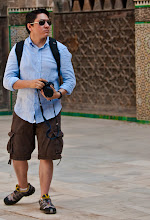Travel Photography tips
Is good to go to a location and have a them around the photoshoot. Get an assignment
- Working hands
- Colorful
- Street names
- Vivid Colors
- Close up Local architecture
- Children
- Keep it friendly when approaching people
- Know when to back down. dont be upset by a refusal, just try somebody else
- Learn the lingo:: learn a few basic words from the language of the country you are visiting, at least please and thanks
- Understand the culture: research into local customs
- Fill the frame: get in as close as possible to the subject
- Research your destination thoroughly, if you get some research done it will tell you what kit to bring
- Make the light work for you. Bring a reflector/diffuser kit and a flash with a diffuser. Controlling the light is key for a good portrait
- Know the best time to shoot: Avoid harsh sunlight if possible move the subject to the shade
- When shooting wildlife, preparation is key: Bring the longest lens you have
- Consider composition carefully. Dead Center is deadly. Position the subject off-centerfor a more interesting composition
- Experiment with filters: Use a polarizing filter, to reduce glare on water and foliage
- Ask permission to take pictures of people:
- Change your perspective, tell more of the story by using wider lenses.
- For more marketable pictures, try writing, it helps selling a set for a certain location
- Create a diary of your travels, this will help tell a story of your set
Checklist before you go...
- Do your research: read upon the area for things to shoot where to go and where not to
- Check your documents
- Equipment list
- Clean Equipment
- Check equipment (take a few test shots)
- Charge batteries
- Power (dont forget a travel adapter)
- Check airline restrictions for carry-on on passport and electronics
- Storage; enough memory cards and back up units in case those cards fill up
Think Kit
Make sure you pack the right equipment. Think about these filters, lenses and cameras to suit all the photographic situations you might encounter. A circular polarizer is a most
Outside the box
Capture not only buildings and locations but the locals while on your travels and you will have some outstanding shots
Add context
Although some shots look like they could have been taken anywhere in the world, make sure your shots dont. Add subtle touches like a local language sign pr native animal to your shot to give a little context
Zoom In
Great travel shots arent just sweeping vistas and huge buildings. Get up close and shoot individual hieroglyphs, single crucifixes or sained glass windows
Colour composition
Take advantage of local dress, landmarks and culture to take striking photos.. The rules of composition still apply, but you could try to vary your viewpoint to get more exciting frames
After dark
Wait until the lights go down brefore you get your camera outm Dusk and sunset hours are beautiful by the water. Look out for reflections, slow your shutter speed.
Local people
Landscapes may be the most common travel shots, but the ones if local people are often the shots that speak the loudest. Make sure you ask permission to take their photo
In the wild
Invest in a good telephoto lens as well as abean bag. Its essential for a safari
Do your research
Find out everything you can before travel. What events are going while yuou are there. Are there any high vantage points to shoot from?.
Research what your destination has to offer and what makes it unique. Research travel brochures it can give you a good indication of whats been shot, so you dont repeat it, but it also is a good start
Find out of any festivals as well as where the local markets are, this creates a huge opportunity. If you want to add some portraits to the mix, learning some of the local language helps
Ideally you should carry 2 DSLR bodies and with them a collection of overlapping lenses a telephoto, tele-zoom and two wide-angle. Keeping lenses to a minimum will mean less switching and less risk to your sensor getting dirty or damaged.
For shooting on the move a good back up unit is essential, there are several at different prices, I personally own this one. Some extras to pack on your bag are a tripod (carbon fiber would be ideal), cable release, USB cables and spare memory cards. Graduated filers could be consider a luxury if you want to travel light as some of this effect can be recreated in Photoshop




0 comments:
Post a Comment